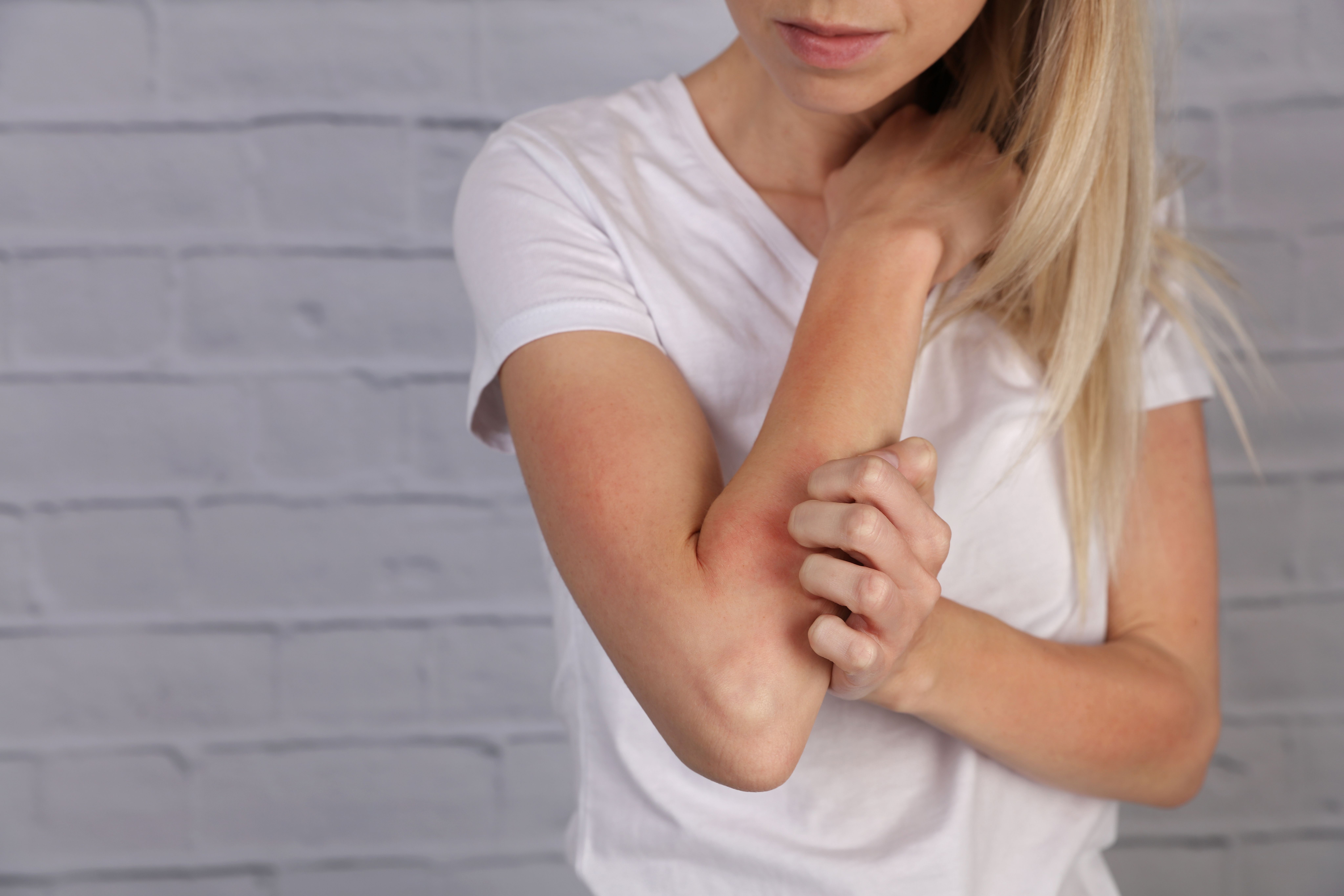- Acne
- Actinic Keratosis
- Aesthetics
- Alopecia
- Atopic Dermatitis
- Buy-and-Bill
- COVID-19
- Case-Based Roundtable
- Chronic Hand Eczema
- Chronic Spontaneous Urticaria
- Drug Watch
- Eczema
- General Dermatology
- Hidradenitis Suppurativa
- Melasma
- NP and PA
- Pediatric Dermatology
- Pigmentary Disorders
- Practice Management
- Precision Medicine and Biologics
- Prurigo Nodularis
- Psoriasis
- Psoriatic Arthritis
- Rare Disease
- Rosacea
- Skin Cancer
- Vitiligo
- Wound Care
News
Article
Dupilumab Injections Show Promise in Chronic Prurigo and Inflammation
Author(s):
A Zurich case series is demonstrating the efficacy of dupilumab injections in patients with inflammation and chronic prurigo.
Excessive type 2 inflammation is a feature of atopic dermatitis and many cases of asthma. But it also underlies less well-known conditions, such as a chronic urticaria (chronic hives).
dream@do/AdobeStock

Chronic prurigo is on that list of fairly obscure conditions that stem from overzealous type 2 inflammation. Although mild itches, and the scratching that people do to relieve them, are everyday fact-of-life, chronic prurigo can lead to an itch-scratch cycle that often results in scarring and can have a profound effect the people’s quality of life.
Clinicians at the University Hospital Zurich recently a published a case series1 comprising 10 patients with chronic prurigo and the results of treatment with dupilumab.
Corresponding author Jürg Hafner, senior staff physician in the hospital’s dermatology department, and colleagues used hospital records, photographs, and answers to validated questionnaires to conduct their study. The questionnaires included the dermatology life-quality index (DLQI), self-administered questionnaire that assesses quality of life over the past 7 days for patient with skin conditions, and the itchy quality-of-life (ItchyQoL) questionnaire that is designed specifically for patients with chronic pruritis. They also had data from a numerical rating scale that asks people to rate their condition on a scale of 1-10.
Hafner and colleagues initially identified 15 patients at the hospital to include in the study, but 4 declined, and 1 could not be reached, so their case series consisted of 10 patients. Six of them had pruriginous atopic dermatitis: chronic prurigo overlapping with atopic dermatitis. All of the patients had received dupilumab injections every 2 to 5 weeks, and prior to dupilumab, had used emollients, topical corticosteroids, and ultraviolet light.
The researchers found that dupilumab resulted in significant improvement of chronic prurigo. For example, they calculated that after a year of treatment, the DLQI score changed by 42% and the ItchyQoL by 45%. They reported an overall result in the measures assessed by the questionnaires ranging from -42% to -82%.
Side effects of headache and vertigo were reported by 4 patients, but Hafner and colleagues reported that the vertigo was “self limited” and that no serious side effects occurred. There was 1 case of eosinophilia, but it was transient, according to the researchers.
The limitations of the study are those typical of a relatively small case series at a single institution.
Reference
- Richter C, Hafner J, Schuermann M, et al. Dupilumab for chronic prurigo: case series on effectiveness, safety, and quality of life [published online ahead of print, 2023 Jun 27]. Dermatology. 2023;10.1159/000531708. doi:10.1159/000531708
[This article was originally published by our sister publication, Managed Healthcare Executive.]
Newsletter
Like what you’re reading? Subscribe to Dermatology Times for weekly updates on therapies, innovations, and real-world practice tips.















